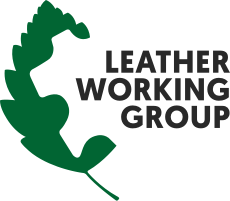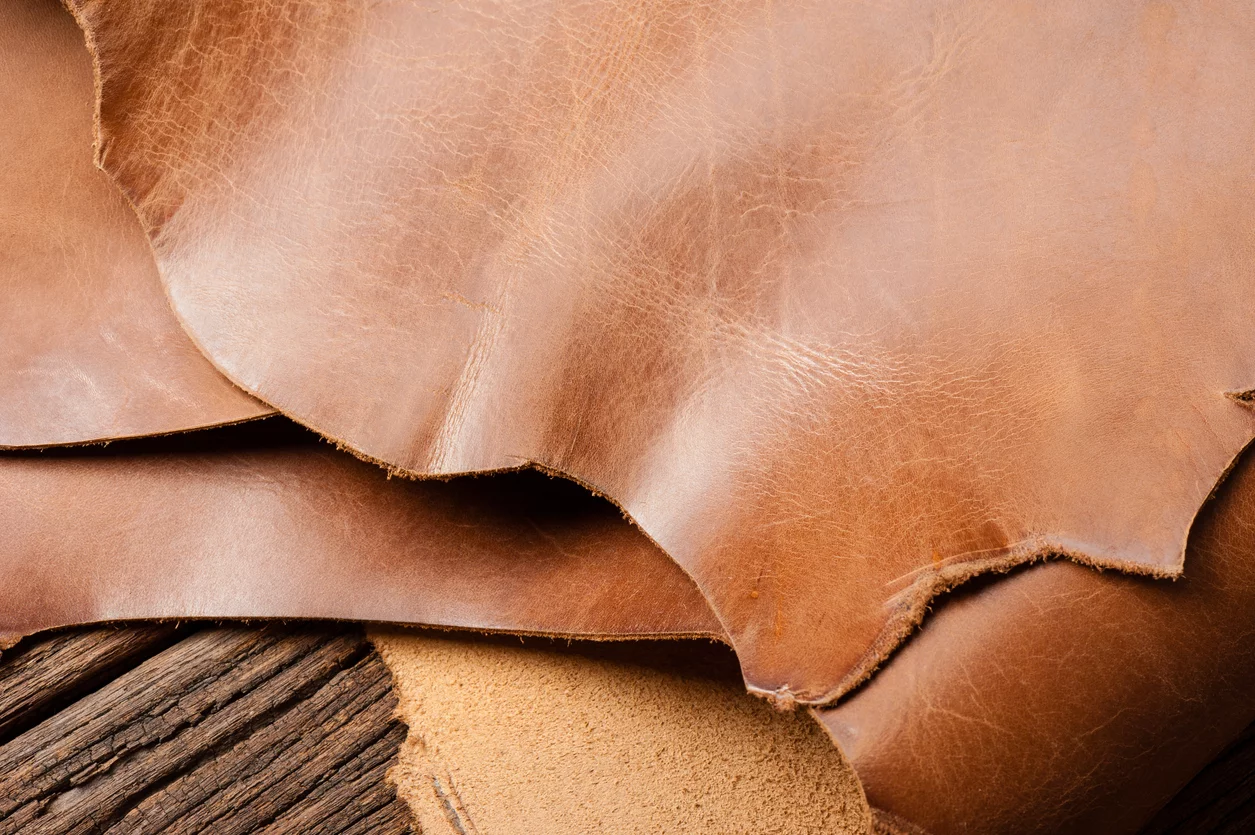Leather Working Group Standards
Leather Working Group currently has four audit standards designed to meet the assessment needs of different operations within the leather production chain. They cover raw material traders through to leather manufacturers and subcontractors, to traders of finished material. The Leather Working Group certification programme does not allow the auditing and certification of any facility which process or trades in fur.
If your business is a leather manufacturer, leather trader, commissioning manufacturer, or subcontractor, it may be eligible to be audited against the applicable LWG audit standard. Audits are carried out by third-party LWG Approved Auditors, which you can find here.
Certification
Getting Started
Find an auditor

LWG Standards Development Programme
Frequently Asked Questions
LWG Audit and Certification
What is the LWG Audit?
First launched in 2005, the LWG Audit Standard is an international certification standard for environmentally and socially accountable leather manufacturing. The audit is a comprehensive assessment of how a tannery measures, controls and reports the impact of their manufacturing operations.
It is the longest running standard specialised for the leather industry and subject to continuous review and revision in consultation with industry experts and our stakeholder group.
What areas does the audit cover?
The LWG Audit includes 17 separate sections focused on the key areas that impact a manufacturer’s performance, including:
- Water & Energy Usage
- Environmental Management
- Chemical Management
- Waste Management & Effluent Treatment
- Health & Safety and Housekeeping
- Learn more about the LWG Audit Remit
How is the LWG Audit scored?
The audit is a complex assessment that takes account of multiple factors, but in summary, companies are awarded a rating in each section against a minimum threshold score
85% for Gold,
75% for Silver,
65% for Bronze
50% for Audited
To achieve its final reported medal rating a manufacturer must achieve that rating across all categories, otherwise it is certified at the level of the lowest category. For example, a manufacturer that achieves gold certification will have achieved Gold in each scored section, if a manufacturer has achieved a mix of ratings across bronze, silver and gold, its final certification will be Bronze.
Companies that do not meet the minimum threshold requirements will not pass the audit.
There are four audit standards - are they all scored in the same way?
The four standards are: Leather Manufacturer, Commissioning Manufacturer, Trader and Subcontractor.
Only Leather Manufactures and Commissioning Manufacturers are awarded medal ratings if achieved during the audit. If these sites pass the audit but do not achieve a rating, they are awarded a certification against the LWG Standard as Audited meaning that although they have passed the audit, they have not yet achieved a medal rating.
Traders are rated as Approved when certified against the LWG Standard.
Subcontractors are again rated as Audited when certified against the LWG Standard.
Who can conduct an LWG Audit?
LWG does not undertake audits but approves independent auditors who are trained to conduct audits using the LWG Audit Protocol. Only these approved auditors can conduct an LWG Audit and submit an audit report to the LWG Assurance team, where they are also subject to further peer review.
Are the LWG Audit standards applied in the same way across the globe?
Yes, the audit assessments are conducted in the same way, to the same standard regardless of a site’s location. As a minimum, leather manufacturers audited under the LWG Audit Standard are expected to comply with their local, regional and national legislation.
How was the audit protocol developed?
The original Audit Protocol was developed by brands and leather manufacturers, with input from NGO’s such as WWF and Greenpeace. It is regularly updated to ensure it remains relevant and considers industry need and evolution, as well as providing the mechanism for gradual improvement.
What is the scoring system based on?
The scoring system for the original versions of the protocol was based on several benchmark studies undertaken by BLC Leather Technology Centre Ltd and involved over 40 tanneries in five leather manufacturing sectors around the world. It aims to reflect environmental impact and has drawn on published data such as the European Commission Reference Document ‘Best Available
Techniques for the Tanning of Hides and Skins’ (May 2001) and United Nations Document US/RAS/92/120/11-51 ‘The scope for decreasing pollution load in leather processing’.
The later versions of the protocol have incorporated the data gathered during previous audits and the scores have been determined by a panel representing tanners, brands and auditors thereby ensuring that the protocol is an accurate reflection of what is both feasible and attainable by a tannery.
How frequently are audits carried out?
Certification is valid for 24 months for leather manufacturing facilities, commissioning manufacturers and subcontractors, and 12 months for part-processed material traders.
Does LWG certification guarantee no restricted substance failures?
No, being LWG certified does not guarantee that there will be no RSL failures in a final product. It reduces the likelihood of an RSL failure, but it is not impossible.
For context, the LWG Audit assesses whether a tannery has an internal RSL or RSLs provided by customers, how often they are reviewed and test against, as well as if there is evidence of conformance to their customer’s RSLs.
Does LWG certification replace the need for legal compliance assessments?
The LWG Audit is not an assessment of legal compliance and does not grant a company a legal operating permit. Any company that does not having valid legal operating permits will automatically fail their audit.
Is traceability assessed?
The audit assesses the leather manufacturers ability to trace its material back to a specific slaughterhouse. This is rated separately from the environmental score and shown as a percentage for both physical traceability and documentation.
How far back in the leather supply chain does LWG trace material?
In terms of best practice, the LWG assess a leather manufacturer’s ability to trace their material back to the slaughterhouse of origin through physical marking.
However, the nature of the agricultural sector in some regions of the world means that there may be no formal, industrialised slaughter — thereby impacting the ability of tanneries in those regions to trace their material in their supply chain back. In recognition of this, LWG uses a weighted scoring mechanism for incoming materials.
Why should leather manufacturers trace their material?
Traceability in the leather supply chain offers significant benefits for brands, manufacturers, and consumers. With a transparent, fully traceable supply chain, companies can better identify material quality issues, detect illegal activities or poor practices, and verify material origin. Understanding material provenance also supports effective management of upstream issues, such as deforestation risks.
Is animal welfare assessed?
The LWG Environmental Audit is used to assess the environmental performance of a tannery’s manufacturing processes and as such it does not audit slaughterhouses, direct or indirect farms. The audit looks at companies making leather from start (raw hide) to finish (finished leather, sold onto a shoe manufacturer, for example).
Is worker safety assessed?
There is an assessment of emergency plans which includes a limited assessment of the provision of health and safety equipment, along with assessment of chemical health & safety for workers, PPE and safe machinery.
Does LWG conduct a social audit?
What types of leather does the LWG audit cover?
The LWG Leather Manufacturer Audit was initially developed to audit tanneries producing bovine (cow) leather. As LWG has grown, the audit protocol has expanded its scope to also assess tanneries that produce leather of caprine (goat), porcine (pig) and ovine (sheep) origin, with some exotic materials too.
What does LWG consider to be an "exotic" material?
LWG considers exotic materials as those that are covered by legislation or agreements such as the Convention on International Trade in Endangered Species of Wild Fauna and Flora (CITES). Certification of exotic tanneries is dependent upon approval by LWG if the animal from which the skin is obtained is:
- Classed as exotic
- Subject to controls as described by CITES
- Not farmed
- Not part of the human food chain.
The LWG Audit does not cover the production of fur.
Is renewable energy considered in the audit standard?
The LWG Leather Manufacturer Audit Standard considers sustainably sourced renewable energy from wood, tallow and biomass, as well as energy, self-generated through means such as wind turbines, solar panels, and geothermal wells.
Do tanners with their own effluent treatment plants score more highly?
The greater the effort that a tanner takes to reduce environmental impacts whether by reducing usage of environmental resources such as water or energy, or by reducing the level of emissions to the environment gaseous, solid or liquid, the higher will be the score on the assessment.
The score is based on emissions to the environment whether that is from the tannery’s own system or a common or municipal system.
How does the standard cover common effluent treatment plants (CETP)?
The quality of the final effluent is assessed as part of the audit which means the efficiency of a CETP could affect the scores achieved by the Leather Manufacturing Facility. CETPs are not audited but third-party evidence of CETP performance will be required as part of the audit.
How does the audit cover environmental violations?
The audit protocol has a section that identifies previous violations and scores the Leather Manufacturing Facility accordingly. Violations are declared by the leather maker at the time of the audit. The audit is a two-day snapshot in time and not live reporting. Any subsequent violations or warnings will be scored during the next audit.
What if a Leather Manufacturing Facility experiences major violations or persistent discharge problems?
If a leather manufacturer is seen to have persistent problems or a major violation, then their certification may be suspended by the auditing body or the LWG Executive Committee depending on the circumstance.
Does the audit measure air quality?
Currently the audit requires leather manufacturers to comply with local legislation, identify emission points and have appropriate control devices. VOC and ammonia are specifically covered in relation to Health & Safety and, emissions and carbon footprint.
Does an LWG audit guarantee no Chrome VI failures?
Due to the batch nature of leather processing, it is impossible to guarantee that chrome VI or any form of RSL failure will not occur. However, in general terms by their nature, the LWG rated tanneries will tend to have a more thorough understanding of their critical processes and more consistent approach to production control and therefore present a lower risk.
How are Chrome VI and Prop 65 covered in the LWG Audit Standard?
Chromium III (trivalent chromium) is widely used in the leather industry, due to its stability and effectiveness in finished products. Chromium VI is not used as part of the tanning process, but may, in some cases form during or after leather processing as a result of poor process control, leading to an unwanted reaction.
Leather is classified as Chrome-Free if it contains less than 1000 mg/kg of total chromium, measured on a dry weight basis, in accordance with the BS EN 15987 standard.
For both Gold and Silver certifications under the Leather Working Group (LWG), Chromium VI (hexavalent chromium) levels must be below 3 mg/kg. Any level above 3 mg/kg results in an automatic failure.
California Proposition 65 (Prop 65) and Hexavalent Chromium in Leather
Under a Prop 65 settlement agreement, leather sourced from a certified tannery does not require a Prop 65 warning for hexavalent chromium. Tanneries that are Gold-rated under the LWG Audit Protocol (P7.2.2 or higher) or meet the requirements in the Restricted Substances, Compliance & Chromium VI Management module are recognised as certified.
However, it is important to note that this exemption does not eliminate the need for batch testing. Brands are encouraged to independently specify testing requirements for their products where Chromium VI compliance is essential.

